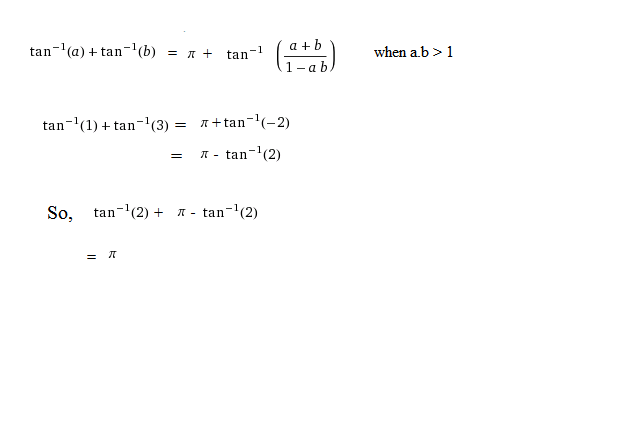This section requires Javascript.
You are seeing this because something didn't load right. We suggest you, (a) try
refreshing the page, (b) enabling javascript if it is disabled on your browser and,
finally, (c)
loading the
non-javascript version of this page
. We're sorry about the hassle.
4 solutions
See the image below;
The formula is IMPORTANT:

See the Three Square Problem .
tan − 1 1 + tan − 1 2 + tan − 1 3 = 2 3 π − ( α + β + γ ) = π
(Angles α , β , γ are defined in the video.)
tan^-1(1) + tan^-1(2) + tan^-1(3) = pi/4 + tan^-1(2) + tan^-1(3) \Rightarrow pi/4 + pi + tan^-1(\frac {2+3}{1-2 3}) because [tan^-1(A) + tan^-1(B) =pi + tan^-1(\frac {A+B}{1 - A B)}] when A*B > 1 \Rightarrow pi/4 + pi + tan^-1(-1) \Rightarrow pi/4 + pi + (-pi/4) \Rightarrow pi/4 + pi - pi/4 \Rightarrow pi.
Assume θ = t a n − 1 1 + t a n − 1 2 + t a n − 1 3
Taking t a n both sides,
t a n θ = 1 − ( 1 × 2 + 2 × 3 + 3 × 1 ) 1 + 2 + 3 − ( 1 × 2 × 3 ) = 0
So we can say that θ = n π
Now we will use estimations to find out the integer n.
We know
Now we can estimate θ as 4 π + 2 π + 2 π = 4 5 π > θ > 4 π + 4 π + 4 π = 4 3 π
So possible value of n can be 1 only, proving θ = π